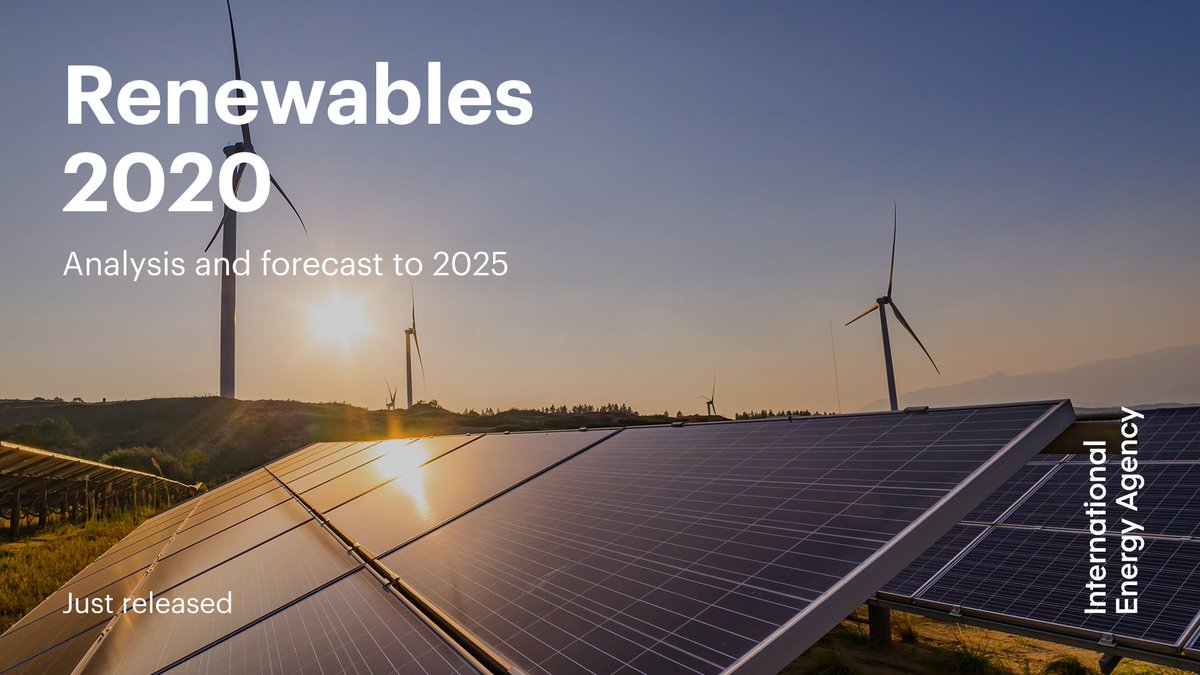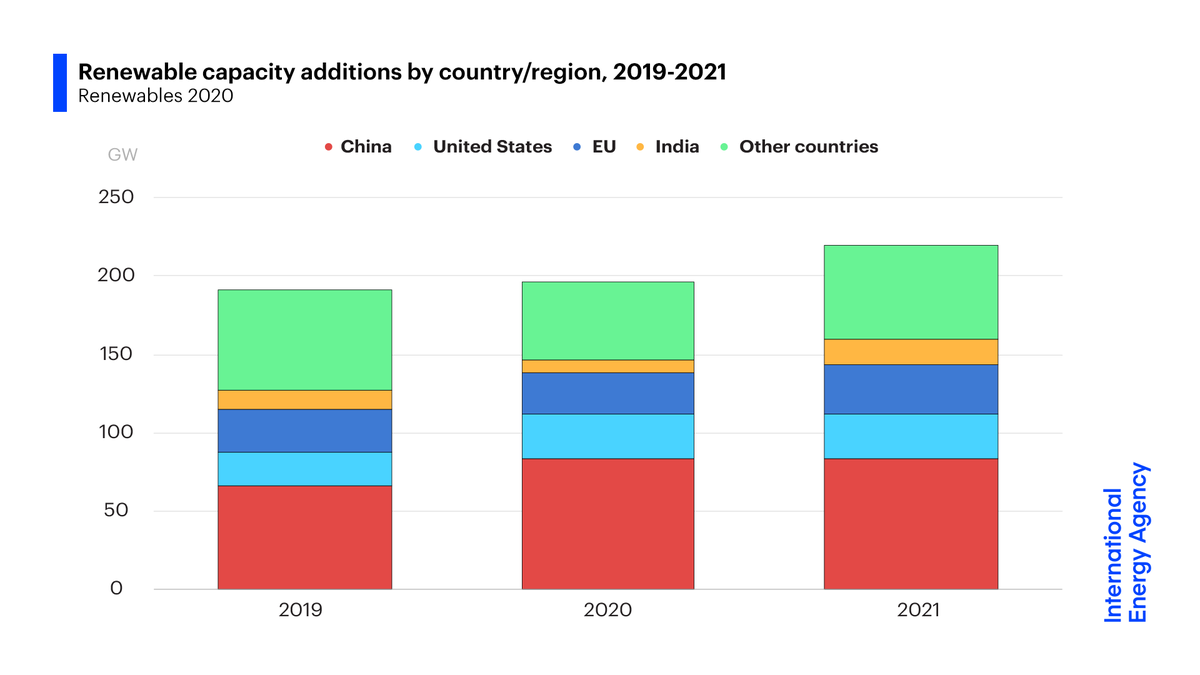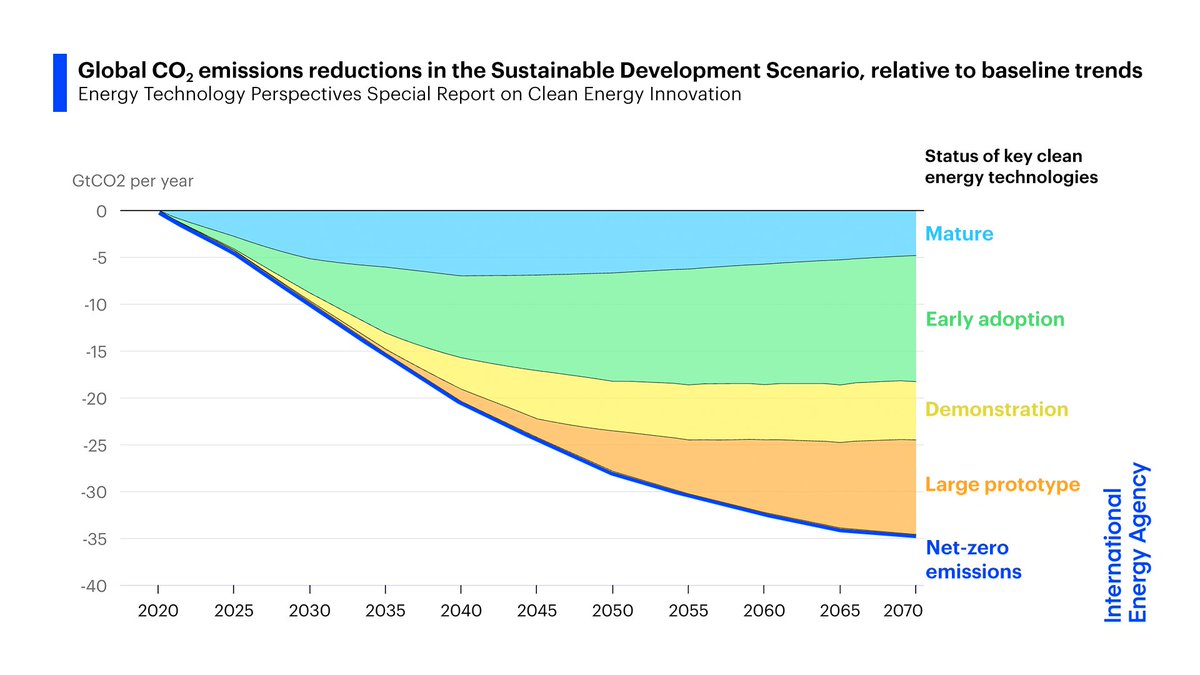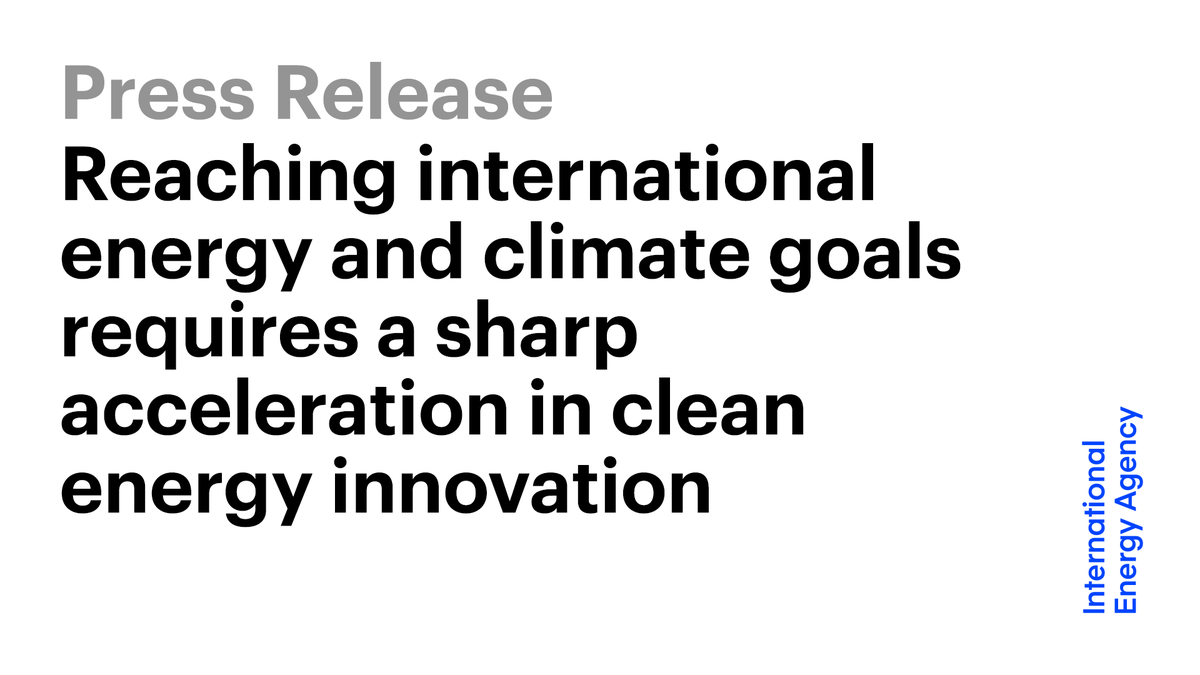
BIG NEWS: Despite falling 6% in 2020 as a whole, global energy-related CO2 emissions rebounded over the course of the year from an April low and rose above their 2019 level in December
Our numbers indicate a return to carbon-intensive business-as-usual ➡️ iea.li/3q8hD0u
Our numbers indicate a return to carbon-intensive business-as-usual ➡️ iea.li/3q8hD0u
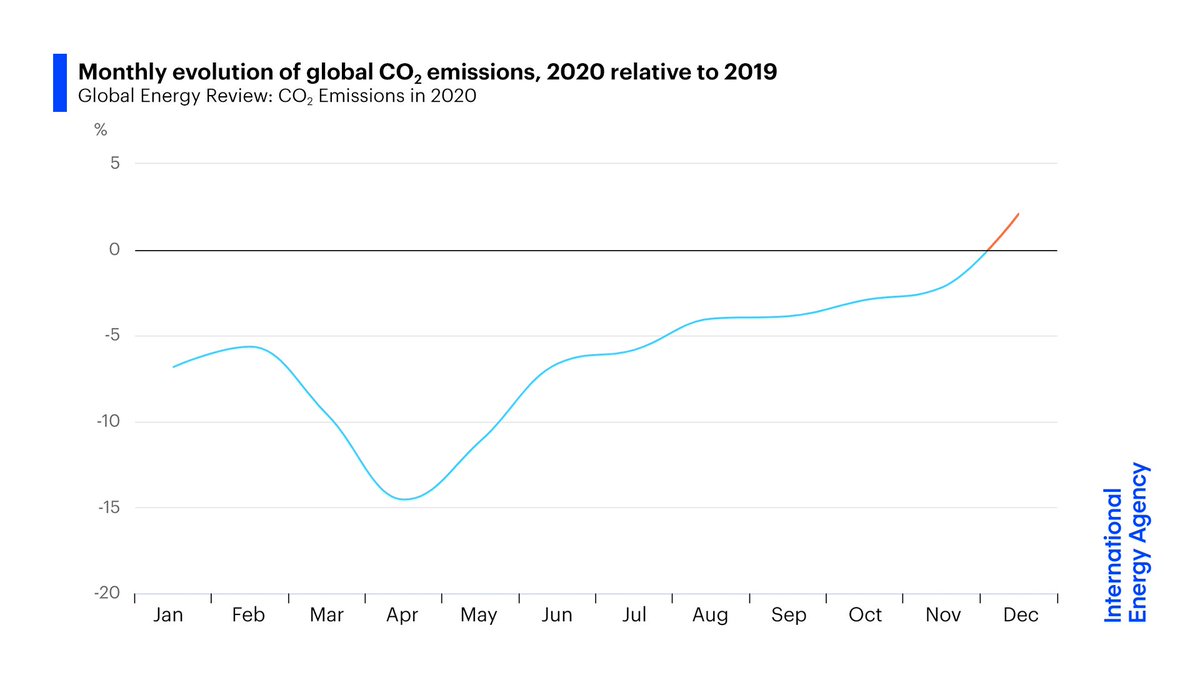
Major economies led the worrying resurgence in CO2 emissions, with China, India & Brazil all above 2019 levels by the end of the year – and the US approaching them.
This is a stark reminder of the urgent need to accelerate global clean energy transitions: iea.li/3dXA6dS
This is a stark reminder of the urgent need to accelerate global clean energy transitions: iea.li/3dXA6dS

Global emissions fell by almost 2 billion tonnes in 2020, the largest absolute decline in history. Most of this was due to lower use of oil for road transport & aviation.
As travel & economic activities pick up around the world, oil consumption & its emissions are rising again.
As travel & economic activities pick up around the world, oil consumption & its emissions are rising again.
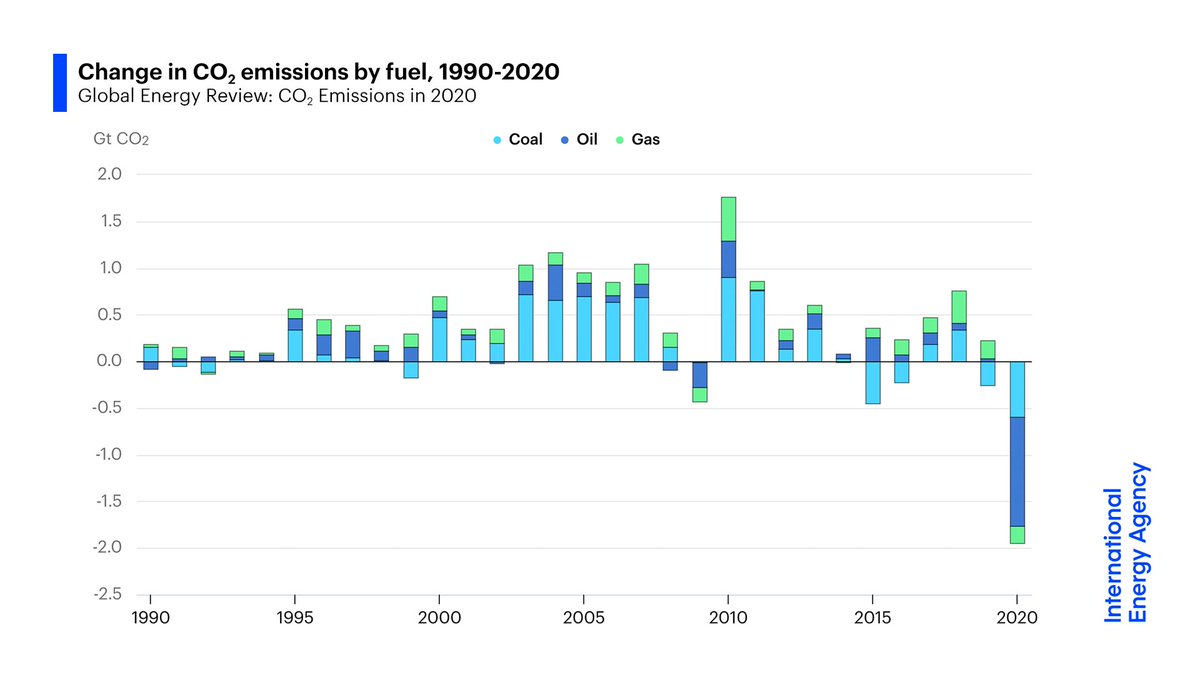
If expectations for a 🌍 economic rebound are confirmed – and without major policy changes in the largest economies – global emissions are likely to rise in 2021
Governments must act fast or the historic chance to make 2019 the definitive peak in global emissions will be at risk
Governments must act fast or the historic chance to make 2019 the definitive peak in global emissions will be at risk

• • •
Missing some Tweet in this thread? You can try to
force a refresh


